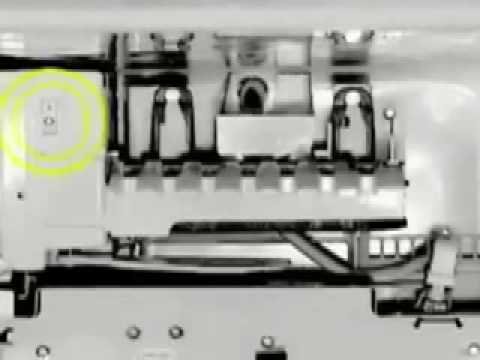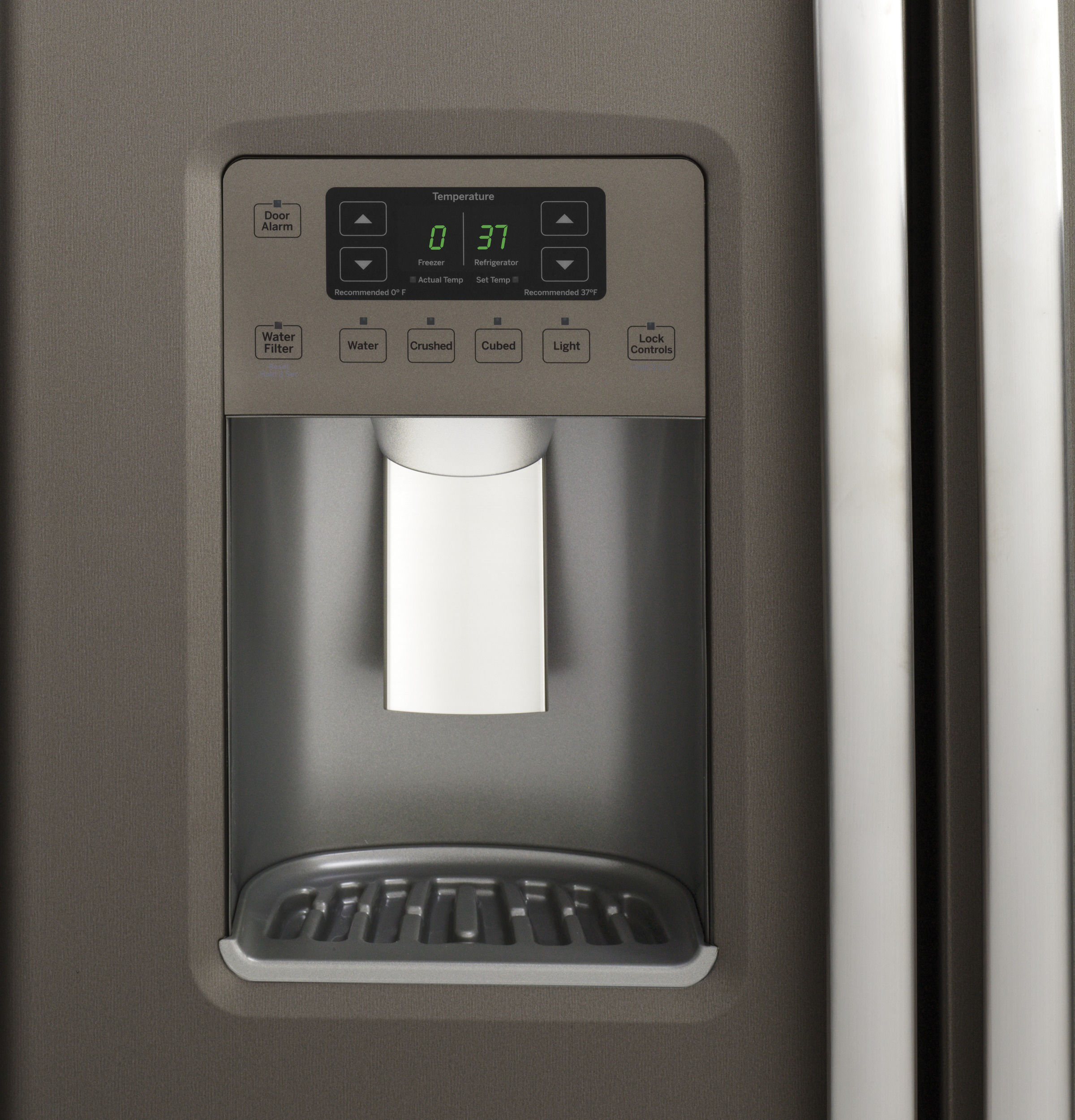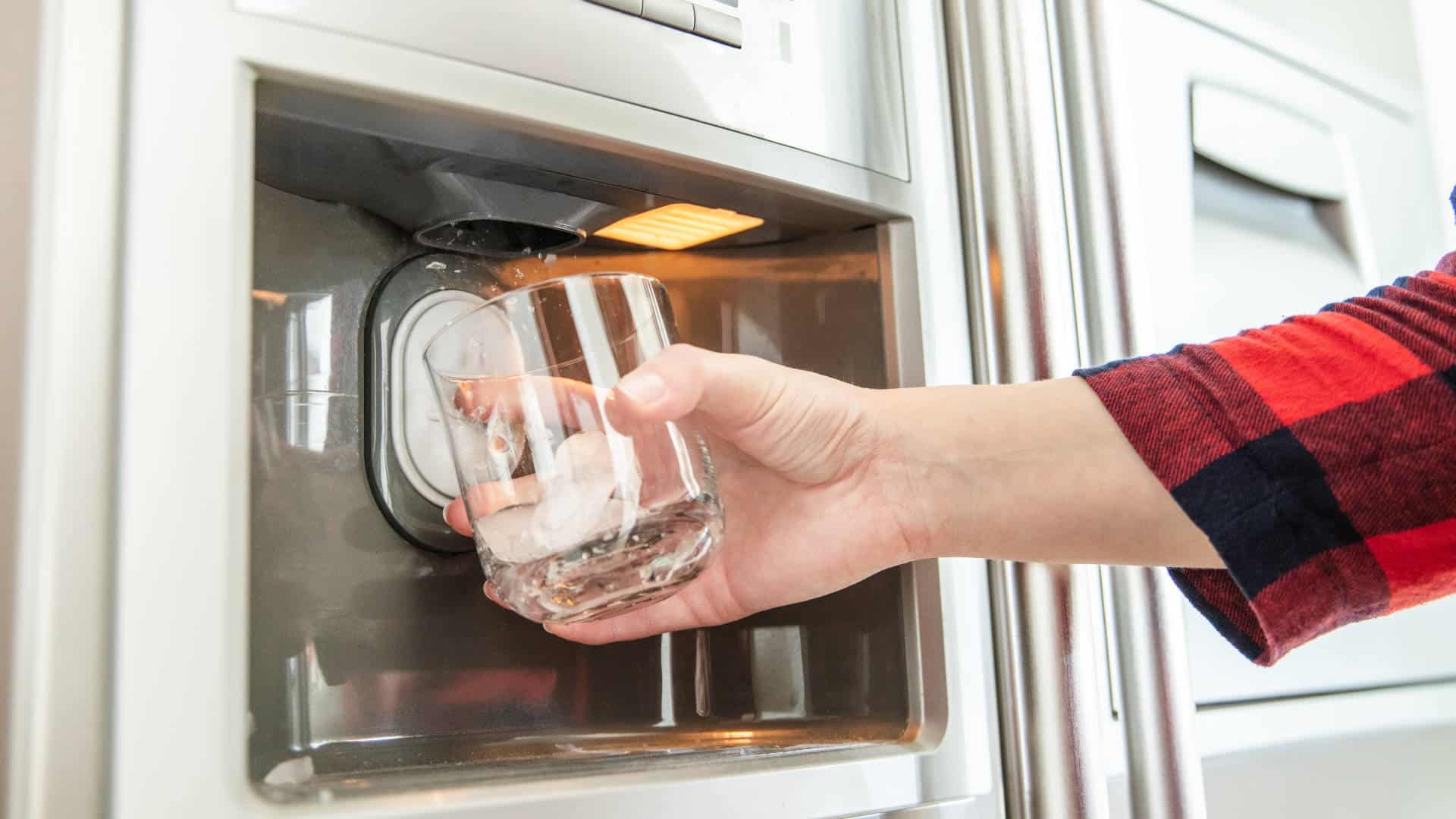
The first step in troubleshooting a GE refrigerator ice maker is to ensure that the ice maker is actually turned on and the freezer is set to the correct temperature. If the ice maker is on but not producing ice, check for any blockages in the water line or filter, and make sure the water supply is connected and turned on.
Clean the ice maker thoroughly and inspect for any damaged or jammed components.

Credit: www.youtube.com
Understanding The Ice Maker
When it comes to troubleshooting your GE refrigerator ice maker, it’s important to have a clear understanding of how it works. The ice maker is a vital component of your refrigerator, responsible for producing ice cubes on demand. By grasping how it functions and identifying common problems that may arise, you can effectively troubleshoot and resolve issues with your ice maker.
Function And Components Of The Ice Maker
The ice maker in your GE refrigerator operates using a relatively simple process. It works by freezing water, releasing the ice cubes into a storage tray, and then dispensing them when necessary. To understand this mechanism better, let’s dive into the key components of the ice maker:
- Water Fill Valve: This valve controls the flow of water into the ice maker. When the ice maker signals that it needs water, the fill valve opens, allowing water to enter.
- Ice Mold: This is the mold where water is frozen into ice cubes. Once the water is supplied, it freezes in the mold until the cubes are fully formed.
- Heating Element: The heating element is responsible for heating the mold slightly to release the ice cubes. When the ice cubes are ready to be dispensed, this element is activated to loosen them from the mold.
- Motor and Gear: These components work together to control the rotation of the ice maker. They help move the ice cubes from the mold to the storage tray and facilitate the dispensing process.
- Storage Tray: This is where the ice cubes are stored until they are ready to be used. The tray holds a certain quantity of ice, ensuring there’s always a supply available.
Common Problems With The Ice Maker
While the ice maker may seem like a straightforward device, it can still encounter several issues that may affect its performance. Understanding these common problems can help you troubleshoot your GE refrigerator ice maker more effectively. Some frequent issues include:
- No Ice Production: This occurs when the ice maker fails to produce any ice cubes at all. It can be caused by a faulty water fill valve, a blockage in the water supply line, or an issue with the motor or gear system.
- Small or Misshapen Ice Cubes: If your ice cubes are coming out smaller than usual or have irregular shapes, there could be a problem with the water supply. Insufficient water flow or an improperly functioning fill valve may be to blame.
- Ice Won’t Dispense: When your ice maker fails to dispense ice, it could indicate an issue with the motor, a faulty dispenser actuator, or even a problem with the control board.
- Leaking Water: If you notice water pooling around your ice maker, it’s crucial to identify the source of the leak. It could stem from a faulty water inlet valve, a cracked ice mold, or a damaged water supply line.
Identifying Issues With The Ice Maker
When troubleshooting your GE refrigerator ice maker, it’s important to identify the specific issue at hand. By understanding the symptoms associated with different problems, you can take the appropriate steps to resolve them. Here are some key signs to watch out for:
- No Ice Production: If your ice maker isn’t producing any ice, check if you can hear the sound of the motor running or feel any vibrations indicating it’s operational. If not, it may be necessary to inspect the motor and gear system for any potential faults.
- Small or Misshapen Ice Cubes: Examine the water supply line for any blockages that may hinder adequate water flow. Additionally, ensure that the water fill valve is functioning correctly, allowing an adequate amount of water into the ice mold.
- Ice Won’t Dispense: Test the dispenser actuator by pressing it to see if it activates the motor. If there’s no response, there may be an issue with the motor or dispenser actuator that needs attention.
- Leaking Water: Carefully inspect the water inlet valve, ice mold, and water supply line for any signs of damage or leaks. Identifying the source of the leak will help you determine which component needs to be repaired or replaced.

Credit: fleetappliance.com
Troubleshooting Steps
Dealing with a malfunctioning GE refrigerator ice maker can be frustrating, but with a systematic approach to troubleshooting, you’ll be able to identify and fix the issue swiftly. By following the steps below, you can efficiently diagnose and resolve major problems that commonly arise with a GE refrigerator ice maker. Whether it’s water supply issues, mechanical or electrical problems, or ice cube formation issues, this guide will help you identify the root cause and provide solutions to get your ice maker back in working order.
Basic Checks And Precautions
Before diving into complex troubleshooting steps, it’s crucial to perform some basic checks and precautions. These initial steps will help rule out simple causes of ice maker malfunctions, saving you time and effort. To start:
- Ensure the refrigerator is plugged in and receiving power.
- Make sure the water supply to the refrigerator is turned on.
- Check if the refrigerator is properly leveled to ensure proper ice maker operation.
- Inspect the water line for any kinks, leaks, or blockages that may be disrupting water flow.
- Clear any ice buildup around the ice maker that can impede its functionality.
Diagnosing And Fixing Water Supply Issues
If your GE refrigerator ice maker is not producing ice, it is vital to investigate potential water supply issues. Follow these steps to diagnose and fix water supply problems:
- Inspect the water inlet valve for any obstructions or debris that may be blocking water flow.
- Ensure the water line is properly connected to the valve and not kinked.
- Check if the water filter is clogged and needs replacement.
- Test the water pressure to ensure it meets the refrigerator’s requirements.
- If necessary, replace the water inlet valve or the entire water line to resolve any internal blockages or leaks.
Resolving Mechanical Or Electrical Problems
If the ice maker is working but not dispensing ice, it may indicate mechanical or electrical problems. Follow these troubleshooting steps to address these issues:
- Inspect the ice dispenser chute for any obstructions or frozen ice that may be preventing ice from dispensing.
- Check if the dispenser solenoid is functioning correctly. If not, it may need replacement.
- Ensure the ice control board or module is in working condition and replace if necessary.
- Examine the auger motor and dispenser switch for any faults that may require repair or replacement.
Fixing Ice Cube Formation Problems
If the ice maker is producing ice cubes that are too small, misshapen, or cloudy, resolving ice cube formation problems is crucial. Follow these steps to address these issues:
- Check if the temperature in the freezer is too high, as it can affect ice cube formation. Adjust the temperature accordingly.
- Inspect and clean the ice maker mold to remove any buildup or residue that may affect ice cube quality.
- Ensure the ice maker’s icemaker assembly is properly aligned and flush with the freezer wall.
- Verify that the water inlet valve is fully opening to allow an adequate water supply for ice formation.
Dealing With Freezing Or Leaking
Experiencing freezing or leaking issues with your GE refrigerator ice maker can be problematic. Follow these steps to tackle these common problems:
- Inspect the ice maker mold for any cracks or damage that may lead to leaks.
- Ensure the ice maker’s fill cup is properly aligned and not overflowing, causing leaking.
- Check if the water inlet valve is closing fully to prevent overfilling and freezing.
- If necessary, replace any faulty components such as the ice maker mold or water inlet valve.
Preventive Measures And Maintenance
Regular preventive measures and maintenance play a crucial role in ensuring the smooth functioning of your GE refrigerator ice maker. By following a few simple steps and incorporating regular care, you can prevent potential issues and extend the lifespan of your appliance. This section will guide you through the essential preventive measures and maintenance tasks to keep your GE refrigerator ice maker running efficiently.
Regular Cleaning And Sanitizing
To maintain optimal performance, it is vital to regularly clean and sanitize your GE refrigerator ice maker. Over time, mineral deposits, mold, and bacteria can accumulate, affecting the quality and taste of your ice. Follow these steps to ensure your ice maker remains clean and hygienic:
- Unplug the refrigerator and locate the ice maker assembly.
- Remove any ice cubes and discard them.
- Using a soft cloth or sponge, wipe down the ice maker’s interior surfaces, including the ice bin and ice scoop.
- Mix a solution of mild detergent and warm water.
- Dip a clean cloth or sponge into the solution and thoroughly clean the interior of the ice maker.
- Rinse the ice maker with clean water to remove any residue.
- Allow the ice maker to air dry completely before reconnecting the refrigerator.
Proper Temperature And Airflow
Maintaining the correct temperature and airflow within your refrigerator is essential for efficient ice production. Follow these steps to ensure proper temperature and airflow:
- Check the temperature settings on your refrigerator. The ideal temperature range for your freezer should be set between 0°F and 5°F (-18°C and -15°C).
- Ensure that the airflow vents inside the freezer are not obstructed by food items or packaging. Proper airflow is necessary for efficient cooling and ice production.
- Periodically inspect the gaskets or seals around the refrigerator and freezer doors. Damaged or worn-out gaskets can result in temperature fluctuations that affect ice production. Replace any damaged gaskets as needed.
Checking And Replacing Components
Regularly checking the various components of your GE refrigerator ice maker can help identify potential issues before they become major problems. Here are some components to inspect and maintain:
- Water Filter: Check and replace the water filter as recommended by the manufacturer to ensure clean and fresh-tasting ice.
- Water Supply Line: Inspect the water supply line for any leaks or kinks. A damaged water supply line can lead to inadequate water flow and reduced ice production.
- Solenoid Valve: Test the solenoid valve to ensure it is functioning correctly. A faulty solenoid valve can cause a lack of water supply to the ice maker.
- Ice Molds or Trays: Inspect the ice molds or trays for any cracks or damage. Damaged molds can lead to misshapen or incomplete ice cubes.
Avoiding Overload And Overworking
Overloading your GE refrigerator ice maker or subjecting it to excessive workload can lead to performance issues and decreased ice production. Follow these tips to avoid overload and overworking:
- Do not overload the ice bin: Ensure that the ice bin is not overcrowded. Overfilling the bin can obstruct ice production and cause ice cubes to stick together.
- Limit door openings: Try to minimize the frequency and duration of opening the refrigerator and freezer doors. Excessive door openings can result in temperature fluctuations that affect ice production.
Professional Maintenance And Assistance
If you encounter persistent issues with your GE refrigerator ice maker or are unsure about performing certain maintenance tasks, it is recommended to seek professional assistance. Trained technicians can provide expert guidance, diagnose any underlying problems, and ensure that your ice maker is functioning optimally.

Credit: d3appliance.com
Frequently Asked Questions For Troubleshooting Ge Refrigerator Ice Maker
How Do I Troubleshoot My Ge Refrigerator Ice Maker?
To troubleshoot your GE refrigerator ice maker, start by checking the water supply, ensuring it is connected and the valve is open. Next, inspect the fill tube for any blockages. If the ice maker still isn’t working, examine the temperature settings and make sure they are set correctly.
Clean the ice maker and check the ice level sensor if necessary.
Why Is My Ge Refrigerator Ice Maker Not Making Ice?
There could be several reasons why your GE refrigerator ice maker is not making ice. Check if the water supply is connected and the valve is open. Ensure the ice maker is turned on and the temperature settings are correct.
Make sure the fill tube is not blocked, and clean the ice maker regularly. If the issue persists, consult a professional technician.
How Often Should I Clean My Ge Refrigerator Ice Maker?
Cleaning your GE refrigerator ice maker should be done every three to six months. Start by removing any excess ice, then wipe down the ice maker with a soft cloth and warm, soapy water. Also, don’t forget to clean the ice bin and the area around the ice maker.
Regular cleaning helps maintain its performance and prevents any potential issues.
Conclusion
Troubleshooting a GE refrigerator ice maker doesn’t have to be a daunting task. By following the steps outlined in this blog post, you can effectively identify and fix common issues that may arise with your ice maker. Remember to check the water supply, inspect the fill tube, and clean the ice maker regularly for optimal performance.
With these simple troubleshooting techniques, you can keep your GE refrigerator ice maker running smoothly and enjoy a steady supply of ice whenever you need it.






